
views
- For wet paint, quickly remove unabsorbed paint with a paper towel, flush the stain, handwash with detergent, and finally, follow up with a machine wash on "cold."
- For dry paint, scrape off as much paint as possible with a scraper or brush, apply a solvent (like rubbing alcohol), scrub the stain with a bristled brush, and finally, machine wash on cold.
- If you can't remove the stain, try strategically cutting it off of your clothing, embroidering over it, or reusing the fabric in a creative way.
Removing Wet Paint

Deal with the stain immediately. The sooner you start fighting the stain, the better your chances will be of getting it out. If you have wet paint on your clothes, take them off right away and attempt to wash the paint out. If you can't take your clothes off, try washing the stain out with them still on. This is better than waiting to deal with the stain and allowing the paint to dry.

Avoid applying any heat to the stain. Many fabric paints are set by heat, which means they do not fully harden until they are heated, usually by an iron. To avoid setting the paint while you are trying to remove it, do not apply heat of any kind to your clothing until the stain is 100% removed. Do not use hot water when washing your clothes. Do not put them in the dryer or use a hair dryer to dry the area you washed unless you're sure the stain is really gone. If your fabric paint does not set with heat, you may use hot water when rinsing the stain out, but be sure to read the bottle thoroughly to make sure.
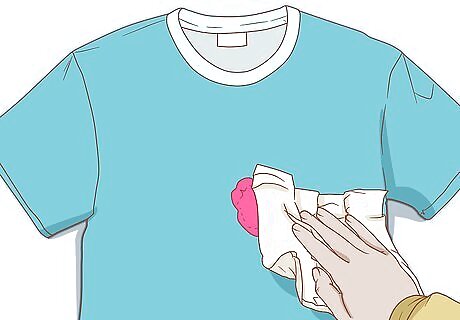
Remove any unabsorbed paint. If you got a large amount of paint on your clothing and not all of it has absorbed into the fabric, remove as much of it as you can before you start washing it. This will help prevent the paint from spreading to clean sections of the fabric. To remove paint from the surface of the fabric, try blotting it up with a paper towel or gently scraping it off with a putty knife. Try not to rub the paint into the fabric as you do this.

Flush the stain. Once you've gotten as much paint off of the surface of the fabric as possible, bring your garment to the sink and run the stained area under cold water until the water runs clear. It's best to do this from the clean side of the fabric in order to avoid accidentally rubbing the paint into your clothing. Remember to use cold water to avoid setting the stain. Always read the care instructions before you start washing your fabric. If tag on your garment says that dry cleaning is required, do not attempt to wash out the stain.
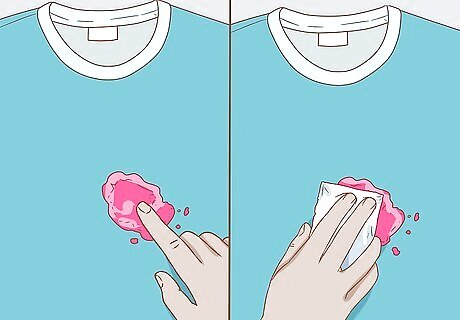
Hand wash with a detergent. Once the stain has been thoroughly flushed, apply some detergent to the affected area and scrub. For the best results, use one part detergent and one part water. You may have to scrub and rinse several times to remove the paint. Dish soap or laundry detergent should both do the trick. If rubbing the stain with your hands is not effective enough, try scrubbing the area with sponge or a brush. An old toothbrush works well for small stains.
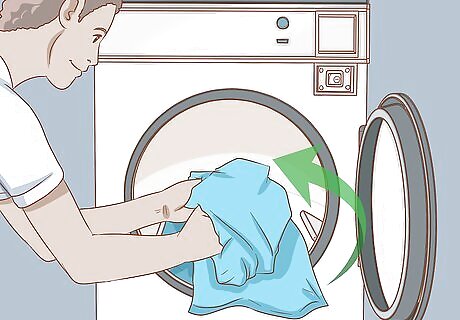
Machine wash your clothes. Once you've gotten as much paint out as you can by hand, put your garment in the washing machine on a cold water setting with plenty of detergent. This should get the rest of the stain out. Do not use hot water to wash your clothes or put them in the dryer unless the stain is completely gone. If the clothing still has a stain after it comes out of the washing machine, let it air dry and follow the steps for removing dried paint. Do not machine wash garments that call for dry cleaning or hand washing, as you may damage the fabric. Always follow the care instructions.

Consider professional cleaning. For delicate fabrics that cannot be washed at home, your only option is to bring the garment to a professional for cleaning. A dry cleaner may be able to remove wet or dry paint stains from delicate fabrics like silk, but there is no guarantee. You can also consider professional cleaning for washable fabrics if you were unsuccessful at removing the stain yourself.
Removing Dry Paint
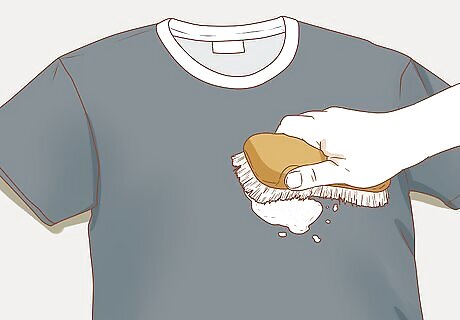
Scrape off as much paint as you can. Before you begin to remove a dried paint stain with chemicals, you should attempt to remove as much dried paint as you can manually. Depending on the amount of paint that is on the fabric, you may be able to scrape some off with a blunt scraper like a putty knife. You may also be able to use a brass wire brush or a stiff nylon brush to remove some of the dried paint. Be careful not to rip the fabric as you try to remove the paint. If none will come off, move on to the next step.
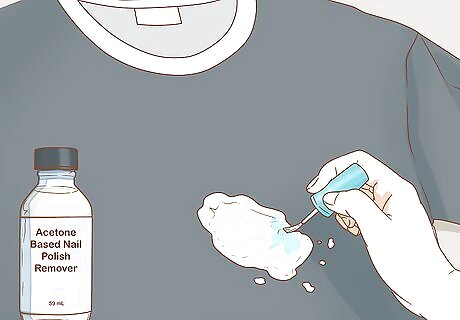
Apply a solvent. Once you have removed as much excess paint as you can by scraping and brushing, you will need to soften the remaining paint with one of several alcohol-based solvents. Chances are you already have one of these products at home. Apply a small amount directly to the paint to begin loosening it. Rubbing alcohol, turpentine, and mineral spirits are all effective solvents for acrylic paint. If you don't have any of these solvents on hand, you can try an acetone-based nail polish remover or even hairspray (as long as it contains alcohol). If none of these products work for you, try visiting your local home improvement store and buy a cleaning product that is specifically designed for removing the type of paint you are dealing with. For stubborn stains, you may have to let the solvent sit on the fabric for a while before you start scrubbing. Solvents are very harsh, so be careful with delicate fabrics. Acetone will damage certain fabrics, among them, those made of acetate or triacetate. Natural fibers like silk and wool are also easily damaged, so always test the solvent on a hidden area like an inside seam before using it. If your garment cannot be treated with solvents, take it to a dry cleaner to be professionally cleaned.
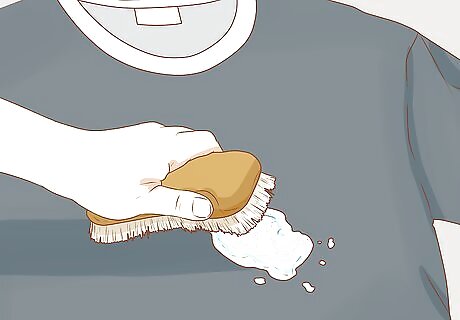
Scrub the stain. Once the paint molecules begin to break down from the solvent and soften, scrub as much of the paint away as you can. Use a brush with stiff bristles for the best results. Once you've gotten most of the paint out, you can move the garment to the sink and continue scrubbing it with detergent and cold water.

Machine wash your clothes. After you have finished hand-washing the stain, put your clothes in the washing machine and wash them in cold water with plenty of detergent. Remember to avoid applying any kind of heat to your clothing unless you are sure that the stain is gone.
Salvaging Your Clothes If the Paint Can't Be Removed
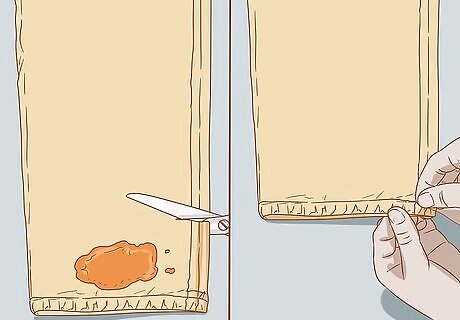
Hem your clothing. If you got paint on the bottoms of your pants legs or sleeves, you may be able to modify your clothing slightly to get rid of the stained area. Simply raise the hem to convert your long pants to capris or your long-sleeved shirt to a ¾-sleeved shirt. You can hem your own clothing if you know how to sew, or you can take it to a tailor to have it professionally done.
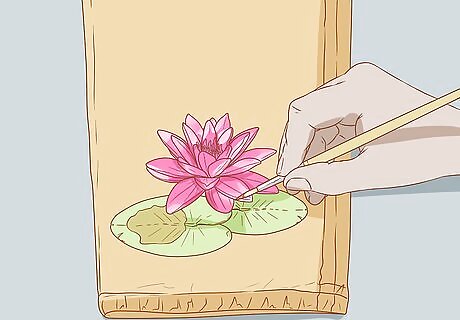
Make it look intentional. Fabric paint is meant to be applied to fabric, so one way to save your garment is to simply apply more paint. Create a fun design on your clothing that incorporates the stain. No one will ever know that you didn't intend to get paint on your clothes. Don't try to cover up the paint stain with a new paint color that matches the fabric. This may not come out well.

Cover the affected area. If you don't want to apply more paint to the fabric, think about other ways you could cover it up. For example, you could attach a decorative patch or even cover the area with sequins. If you don't like to sew, you can find iron-on patches for clothing.
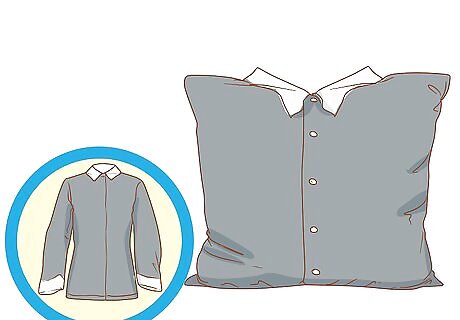
Reuse the fabric. If you can't think of any way to salvage your garment, but you really like the fabric, you may be able to make something else out of it. For example, if you got paint on your favorite blouse, try making a throw pillow out of the unstained portion of the fabric. You may also be able to cut a large shirt with a paint stain into smaller pieces to make a child's shirt. This will require sewing skills. You can find patterns for making clothes online. If you don't know how to sew, find a tailor who will make custom clothing with your fabric.

















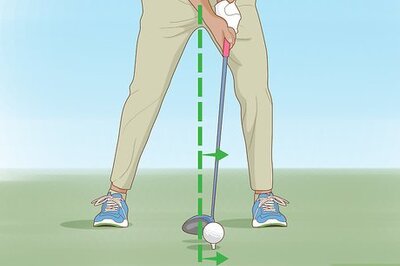

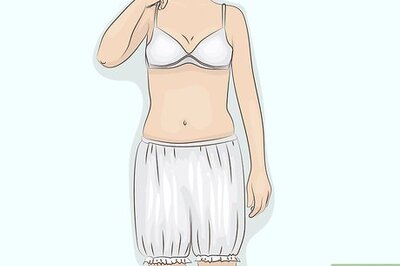
Comments
0 comment